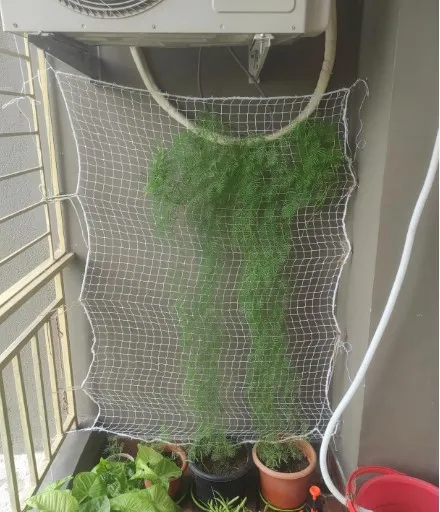-
 Afrikaans
Afrikaans -
 Albanian
Albanian -
 Amharic
Amharic -
 Arabic
Arabic -
 Armenian
Armenian -
 Azerbaijani
Azerbaijani -
 Basque
Basque -
 Belarusian
Belarusian -
 Bengali
Bengali -
 Bosnian
Bosnian -
 Bulgarian
Bulgarian -
 Catalan
Catalan -
 Cebuano
Cebuano -
 China
China -
 Corsican
Corsican -
 Croatian
Croatian -
 Czech
Czech -
 Danish
Danish -
 Dutch
Dutch -
 English
English -
 Esperanto
Esperanto -
 Estonian
Estonian -
 Finnish
Finnish -
 French
French -
 Frisian
Frisian -
 Galician
Galician -
 Georgian
Georgian -
 German
German -
 Greek
Greek -
 Gujarati
Gujarati -
 Haitian Creole
Haitian Creole -
 hausa
hausa -
 hawaiian
hawaiian -
 Hebrew
Hebrew -
 Hindi
Hindi -
 Miao
Miao -
 Hungarian
Hungarian -
 Icelandic
Icelandic -
 igbo
igbo -
 Indonesian
Indonesian -
 irish
irish -
 Italian
Italian -
 Japanese
Japanese -
 Javanese
Javanese -
 Kannada
Kannada -
 kazakh
kazakh -
 Khmer
Khmer -
 Rwandese
Rwandese -
 Korean
Korean -
 Kurdish
Kurdish -
 Kyrgyz
Kyrgyz -
 Lao
Lao -
 Latin
Latin -
 Latvian
Latvian -
 Lithuanian
Lithuanian -
 Luxembourgish
Luxembourgish -
 Macedonian
Macedonian -
 Malgashi
Malgashi -
 Malay
Malay -
 Malayalam
Malayalam -
 Maltese
Maltese -
 Maori
Maori -
 Marathi
Marathi -
 Mongolian
Mongolian -
 Myanmar
Myanmar -
 Nepali
Nepali -
 Norwegian
Norwegian -
 Norwegian
Norwegian -
 Occitan
Occitan -
 Pashto
Pashto -
 Persian
Persian -
 Polish
Polish -
 Portuguese
Portuguese -
 Punjabi
Punjabi -
 Romanian
Romanian -
 Russian
Russian -
 Samoan
Samoan -
 Scottish Gaelic
Scottish Gaelic -
 Serbian
Serbian -
 Sesotho
Sesotho -
 Shona
Shona -
 Sindhi
Sindhi -
 Sinhala
Sinhala -
 Slovak
Slovak -
 Slovenian
Slovenian -
 Somali
Somali -
 Spanish
Spanish -
 Sundanese
Sundanese -
 Swahili
Swahili -
 Swedish
Swedish -
 Tagalog
Tagalog -
 Tajik
Tajik -
 Tamil
Tamil -
 Tatar
Tatar -
 Telugu
Telugu -
 Thai
Thai -
 Turkish
Turkish -
 Turkmen
Turkmen -
 Ukrainian
Ukrainian -
 Urdu
Urdu -
 Uighur
Uighur -
 Uzbek
Uzbek -
 Vietnamese
Vietnamese -
 Welsh
Welsh -
 Bantu
Bantu -
 Yiddish
Yiddish -
 Yoruba
Yoruba -
 Zulu
Zulu
Jan . 09, 2025 12:14
Back to list
agricultural insect netting
Agricultural insect netting is increasingly recognized as an indispensable tool for sustainable farming, offering a blend of modern technology and age-old farming wisdom. Designed to create a physical barrier against harmful insects, these nets prove essential for both organic and conventional farmers aiming to reduce pesticide use and enhance crop yields. As concerns about chemical-laden produce grow, agricultural insect netting emerges as a pivotal solution for farmers striving to provide cleaner, more environmentally friendly produce.
Trustworthiness in agricultural insect netting is further affirmed through testimonials from farmers who have drastically transformed their farming outcomes. Many farmers attest to the increased productivity and reduced need for chemical interventions, which resonates with the growing demand for sustainable farming practices. The transparency offered by manufacturers about materials and production processes enhances trust, ensuring that the products are both reliable and environmentally responsible. Farmers adopting agricultural insect netting not only improve their yields but also contribute to a healthier ecosystem. By minimizing the use of chemical pesticides, they play a part in conserving beneficial insects and preventing soil and water contamination. This approach aligns with global environmental goals, reflecting a commitment to both high-yield farming and ecological preservation. In summary, agricultural insect netting represents an intersection of innovation, expertise, and sustainability. With its proven effectiveness, durable construction, and endorsement by the agricultural community, it stands as a cornerstone product for farmers dedicated to enhancing productivity while safeguarding the planet. As the agricultural sector moves toward a more eco-friendly and reliable future, insect netting will undoubtedly remain at the forefront of sustainable farming solutions.


Trustworthiness in agricultural insect netting is further affirmed through testimonials from farmers who have drastically transformed their farming outcomes. Many farmers attest to the increased productivity and reduced need for chemical interventions, which resonates with the growing demand for sustainable farming practices. The transparency offered by manufacturers about materials and production processes enhances trust, ensuring that the products are both reliable and environmentally responsible. Farmers adopting agricultural insect netting not only improve their yields but also contribute to a healthier ecosystem. By minimizing the use of chemical pesticides, they play a part in conserving beneficial insects and preventing soil and water contamination. This approach aligns with global environmental goals, reflecting a commitment to both high-yield farming and ecological preservation. In summary, agricultural insect netting represents an intersection of innovation, expertise, and sustainability. With its proven effectiveness, durable construction, and endorsement by the agricultural community, it stands as a cornerstone product for farmers dedicated to enhancing productivity while safeguarding the planet. As the agricultural sector moves toward a more eco-friendly and reliable future, insect netting will undoubtedly remain at the forefront of sustainable farming solutions.
Latest news
-
Shipping Plastic Bags for Every NeedNewsJul.24,2025
-
Safety Netting: Your Shield in ConstructionNewsJul.24,2025
-
Plastic Mesh Netting for Everyday UseNewsJul.24,2025
-
Nylon Netting for Every UseNewsJul.24,2025
-
Mesh Breeder Box for Fish TanksNewsJul.24,2025
-
Expanded Steel Mesh Offers Durable VersatilityNewsJul.24,2025











